Navigating the Purchase of Second-Hand Diamonds
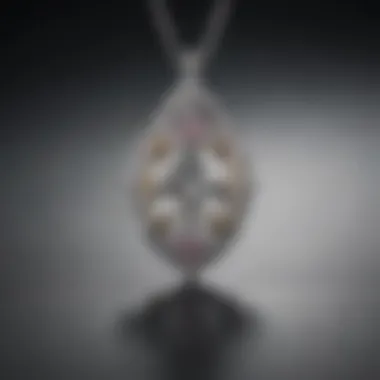
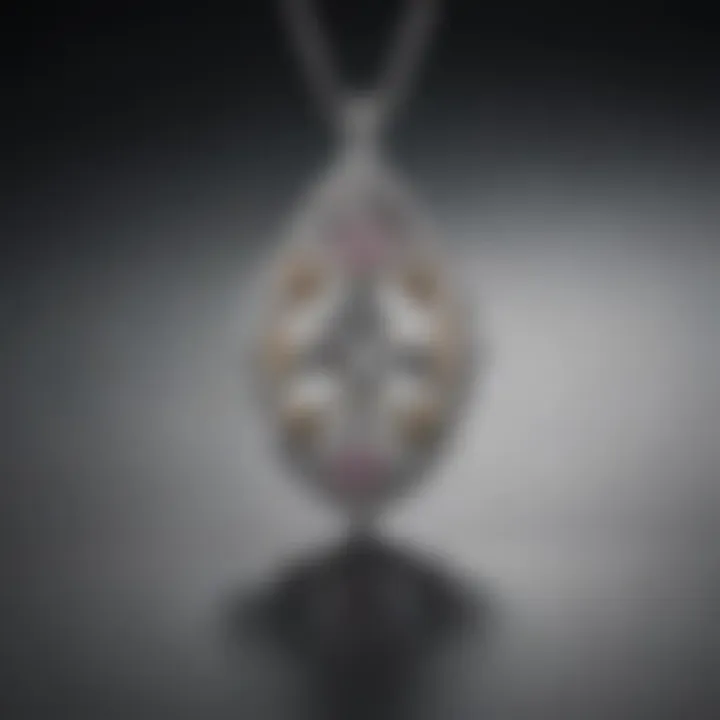
Intro
Buying second-hand diamonds is not just a venture; it's an odyssey into the world of gemstones that balances beauty and value. With growing awareness around sustainability and economic savvy, many are shifting their gaze towards pre-owned gems. This journey beckons not only because of the uniqueness often tied to vintage stones but also due to the myriad financial and ethical advantages they offer. Understanding the subtleties of this market opens up a realm where buyers can explore exquisite options without the premium price tags new diamonds command.
The importance of pre-owned diamonds stretches beyond mere transactions. It leads to a deeper appreciation of the craftsmanship involved, the tales embedded within each stone, and the significant positive impact on the environment. So, let’s unravel this process by delving into the essential aspects of what it means to buy second-hand diamonds, beginning with a foundational understanding of the gemstones themselves.
Understanding Second-Hand Diamonds
When it comes to diamonds, many people envision a dazzling new stone, typically presented in a store filled with luxury and elegance. However, diving into the realm of second-hand diamonds can be both enlightening and rewarding. Understanding the nuances surrounding pre-owned diamonds opens the door to numerous opportunities, leveraging not just aesthetics but also emotional and financial considerations.
Definition and Significance
A second-hand diamond is essentially a stone that has been previously owned and worn, yet it retains its brilliance and charm. These diamonds might come from various sources—perhaps they were inherited, passed down through generations, or purchased but never truly cherished. The significance of these stones goes beyond just their physical beauty; they often carry stories and memories that a brand-new diamond simply can't replicate. For those interested in sustainability or history, second-hand diamonds provide a profound connection, resonating with personal values and ethical considerations.
Owning a second-hand diamond allows buyers to appreciate the stone's journey and its past lives. This significance contributes to a unique identity for the diamond, enhancing its appeal much more than a mass-produced gem. When making a purchase, recognizing the impact of the diamond's narrative can lead to a deeper connection between the owner and the stone itself.
The Appeal of Second-Hand Markets
The allure of the second-hand market is multifaceted. On one hand, there's the financial benefit of acquiring a stunning stone at a fraction of the retail price. On the other, there's an element of exclusivity. A second-hand diamond is often a limited piece that very few have enjoyed, making it a unique treasure.
From an economic standpoint, second-hand diamonds can significantly ease the financial burden associated with major purchases. Compared to new diamonds, their prices can be lower and more accessible to a wider audience. Potential buyers can find exquisite options that are both stunning and financially feasible, allowing them to invest in quality without breaking the bank.
Moreover, the market has expanded exponentially, with online platforms, jeweller showrooms, and auction houses all offering pre-owned options. This surge in availability opens up a diverse fabric of styles, cuts, and characteristics, making it easier for enthusiasts and collectors to find that perfect match.
"There’s a certain charm in a diamond that has been worn before; it’s as if it whispers secrets of the past to you."
The second-hand diamond market also fits into a growing trend of conscious consumerism. Buyers are increasingly aware of the environmental footprint of new mining operations. Opting for pre-owned diamonds echoes a commitment to sustainability, significantly reducing the demand for new stone extraction. With each purchase, buyers contribute to a positive cycle that champions recycling and thoughtful consumption.
Benefits of Buying Second-Hand Diamonds
Understanding the benefits of purchasing second-hand diamonds is crucial for anyone considering entering this unique market. Second-hand diamonds not only offer financial savings but also open doors to a myriad of opportunities that new diamonds might not present. From the environmental advantages to the rich history embedded in each gem, the reasons for choosing pre-owned options are compelling and multifaceted.
Cost Considerations
When it comes to cost, buying a second-hand diamond could potentially save a buyer a significant chunk of change. New diamonds have marked up prices due to the costs incurred from mining, cutting, and marketing. However, second-hand diamonds often bear a lower price tag as they have already passed through the retail cycle, making them a wallet-friendlier alternative.
Moreover, let's consider the concept of value retention; a new diamond often depreciates immediately after purchase, akin to a new car driving off the lot. In contrast, some second-hand diamonds maintain or even increase their value due to their rarity or specific characteristics. When you think of it that way, your purchase could become more of an investment in time as well.
Unique Historical Value
Every second-hand diamond has its own story, a narrative wrapped in the history of its previous owner. There’s a certain charm about wearing a diamond that might have adorned the finger of a beloved figure or served as a center piece in a generational heirloom. This historical aspect enhances the emotional connection between the gem and its new owner—a connection often absent in newly mined stones.
Acquiring a diamond with a notable backstory adds layers of meaning, making it more than just a beautiful piece of jewelry. It transforms into a conversation starter, an artifact that not only reflects your style but also resonates with tales of the past. In essence, every second-hand diamond is like a time capsule waiting to be rediscovered.
Environmental Impact
Purchasing second-hand diamonds aligns well with modern consciousness regarding environmental concerns. The diamond mining industry is notorious for its significant ecological footprint, including habitat destruction, high water usage, and pollution. In contrast, opting for a second-hand diamond means you are essentially recycling a product that already exists.
By choosing pre-owned, you contribute to the circular economy, promoting sustainability and lessening the demand for new mining operations. It’s not merely a purchase; it’s a conscientious choice that reflects your values. Engaging in this practice can create a ripple effect, encouraging more individuals to consider the ramifications of their purchases, thereby fostering a culture of sustainability.
"In an age where mindful consumption is becoming increasingly important, the decision to buy second-hand diamonds speaks volumes about our priorities as consumers."
Understanding these benefits can help potential buyers make educated decisions when considering acquiring a second-hand diamond. The economic advantages, coupled with the sentimental and ecological impacts, paint a holistic picture of why second-hand should be on the table when it comes to diamond shopping.
Challenges of Purchasing Pre-Owned Diamonds
Acquiring second-hand diamonds is a journey filled with potential rewards, but it's not without its hurdles. Understanding the challenges tied to purchasing pre-owned gems is crucial for anyone venturing into this domain. It equips buyers with knowledge, making them feel confident and informed. Ultimately, recognizing these challenges can save one from costly mistakes and ensure a more satisfying experience.
Authenticity Concerns
Authenticity is the backbone of the diamond purchasing process. Many buyers might feel like they’re stepping onto a shaky bridge when faced with the prospect of buying a pre-owned diamond. This is understandable. After all, diamonds are often advertised as unique, luxurious pieces, and the thought of acquiring a fake can raise anxiety levels.
A genuine diamond carries value that mere glass or synthetic stones don't. Therefore, it’s essential to ask for certifications, such as those from the Gemological Institute of America (GIA) or the International Gemological Institute (IGI). These documents provide a detailed analysis of the diamond's properties. However, certifications can also be subject to forgery, thus necessitating an extra layer of scrutiny.
"Always trust, but verify. It's wise to double-check any claim of authenticity you receive."
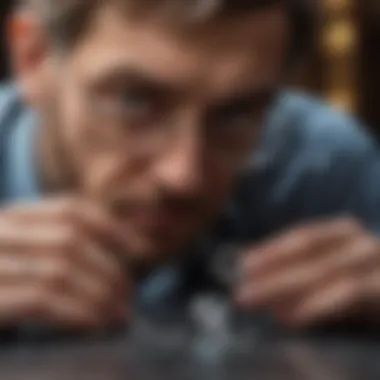
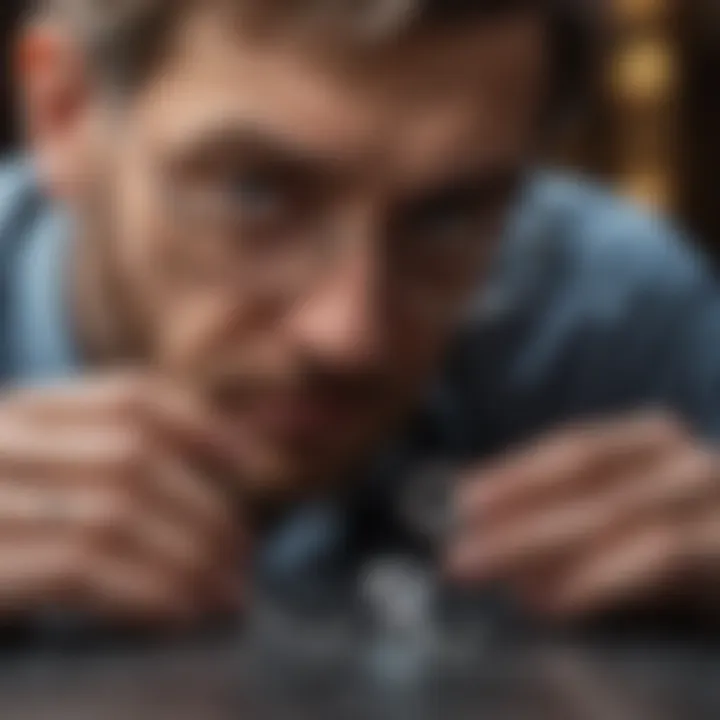
Independent appraisals can serve as a valuable backup to a diamond's purported credentials. Buying from recognized stores or dealers who have a solid history in the business can alleviate some of these worries. Additionally, don't hesitate to run a few tests to check the diamond's** refractive index** or hardness to distinguish it from imitations.
Quality Assessment
Quality is another facet (pun intended) one must navigate while purchasing second-hand diamonds. The initial allure of a lower price can sometimes mask underlying issues that may not be immediately visible. Buyers may find themselves dazzled by the sparkle, only to discover flaws or imperfections if they look closely enough. Understanding the diamond's "4Cs"—cut, color, clarity, and carat weight—is essential when assessing quality.
When examining cut, one ought to look for how well the angles and facets come together to create brilliance. Color refers to the absence of color, where ideally, one should aim for stones that lean closer to the colorless end of the spectrum. Clarity describes the presence of internal or external flaws, which can greatly affect a diamond's value and appearance.
Sometimes previous owners might don’t prioritize the diamond's upkeep. Therefore, it's prudent to scrutinize the quality thoroughly and perhaps even seek the expertise of a gemologist for a second opinion. A few specific considerations might include:
- Are there chips or scratches on the surface?
- Is there any visible inclusions that detract from its beauty?
- How does the stone reflect light?
Determining the quality can make the difference between a stunning find and a regrettable purchase.
Limited Selection
Unlike buying new diamonds, where stores are stocked accordingly, second-hand diamonds can present a more limited selection. It's much like rummaging through a well-worn treasure chest; the gems are intriguing but somewhat unpredictable. This circumstance can be both a challenge and an opportunity.
Some buyers may find themselves limited by their chosen vendor’s inventory, which can be a significant drawback if in search of something highly specific—like a particular cut or size. Moreover, certain popular styles may not be available at all.
To work around this limitation, one should keep an open mind. Browsing through various sources, from auction houses to estate sales or even online platforms. Patience is key. Finding the right piece often takes time, and being flexible can yield surprising results.
Evaluating Second-Hand Diamonds
When diving into the world of second-hand diamonds, one soon realizes that not all pre-owned gems are cut from the same cloth. Grading these stones is a vital step in ensuring you are making a sound investment. Evaluating a diamond involves understanding its characteristics, which is essential to both the aesthetic appeal and the potential resale value. Every gemstone has its narrative and assessing quality properly will enable a buyer to appreciate both its worth and its beauty.
Grading Standards Explained
This is where the so-called Four Cs come into play—Cut, Color, and Clarity are the key standards utilized in assessing diamonds. Each characteristic carries significant weight in terms of the stone's allure and value.
Cut
The cut of a diamond refers not only to its shape but also to how well it has been shaped and polished. This has a crucial impact on how light interacts with the diamond. A diamond’s sparkle—often termed its brilliance—depends largely on its cut quality.
- Key Characteristic: A well-cut diamond can exhibit exceptional light performance, drawing the eye and captivating viewers.
- Why It’s Popular: Buyers appreciate diamonds that dazzle. A properly cut diamond can make a modest size stone look more impressive than a poorly cut larger one.
- Unique Feature & Considerations: Nonetheless, the challenge lies in discerning a superior cut without professional training. Poor cuts can result in stones that are dull or lifeless, despite their size. That's why understanding cut grading—ranging from Excellent to Poor—is essential.
Color
The color of a diamond, while seemingly straightforward, can be a subtle science. Diamonds are categorized on a scale from D (colorless) to Z (heavily tinted).
- Key Characteristic: Most buyers tend to favor diamonds that appear colorless or near-colorless, as these are generally considered more desirable.
- Why It’s Beneficial: Colorless diamonds are seen as timeless and elegant, making them a sought-after choice for many potential buyers.
- Unique Feature & Considerations: However, it’s important to recognize that slight tints may not be as easily noticeable, so one could snag a gem at a reduced price while still achieving a captivating look. The flipping of the script occurs when darker tones may actually add to the beauty in certain vintage or unique stones.
Clarity
The clarity of a diamond refers to the presence of inclusions or blemishes. These natural imperfections can severely affect the stone's visual appeal and value. Clarity grades vary from Flawless to Included, with many buyers preferring stones that are at least VS2 (Very Slightly Included).
- Key Characteristic: A high-clarity diamond appears clearer and more luminous.
- Why It’s Popular: With minimal inclusions, these diamonds are perceived as more refined. Buyers are often drawn to their exquisite appearance.
- Unique Feature & Considerations: However, some diamond enthusiasts find character and charm in unique inclusions, viewing them as markers of a stone’s life story. Navigating the clarity rankings requires both patience and understanding as the nuances can be subtle.
The Importance of Certification
To ensure the authenticity and quality of a second-hand diamond, certification must be sought. Having a gem graded through a recognized laboratory, such as the Gemological Institute of America (GIA), guarantees transparency regarding the stone's characteristics.
- Why It's Essential: This documentation acts as not just a certificate of quality but also as an assurance for potential resale value. It safeguards buyers against fraud or misrepresentation, which unfortunately do exist in the second-hand diamond market.
- The Peace of Mind Factor: Certification gives buyers the confidence they need to proceed with a purchase, knowing they have done their due diligence.
Researching Previously Owned Pieces
When considering a second-hand diamond, research is your best friend. Understanding the previous ownership, history, and provenance can greatly enhance the buying decision. Buying through a reputable dealer with a track record can also ease some concerns.
- Check for Documentation: Whenever possible, ask for any previous appraisal documents or receipts. These can offer valuable clues into the diamond's quality and its journey.
- The Power of Peer Reviews: Don’t underestimate the value of past customers’ experiences. Websites, forums, and social media platforms offer an abundance of insights. You may uncover the gem of wisdom that shines brighter than the diamonds themselves.
In summary, assessing second-hand diamonds demands a keen eye, diligent research, and an understanding of the intricacies embodied in Cut, Color, and Clarity. With proper evaluation, buyers can unearth the gemstones that resonate with their preferences while ensuring a worthy addition to their collections.
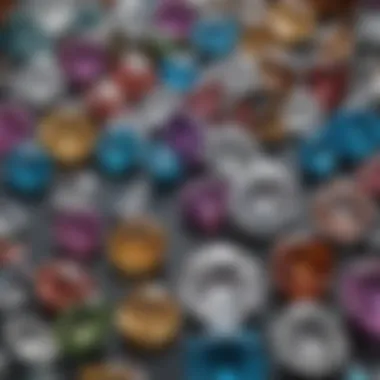
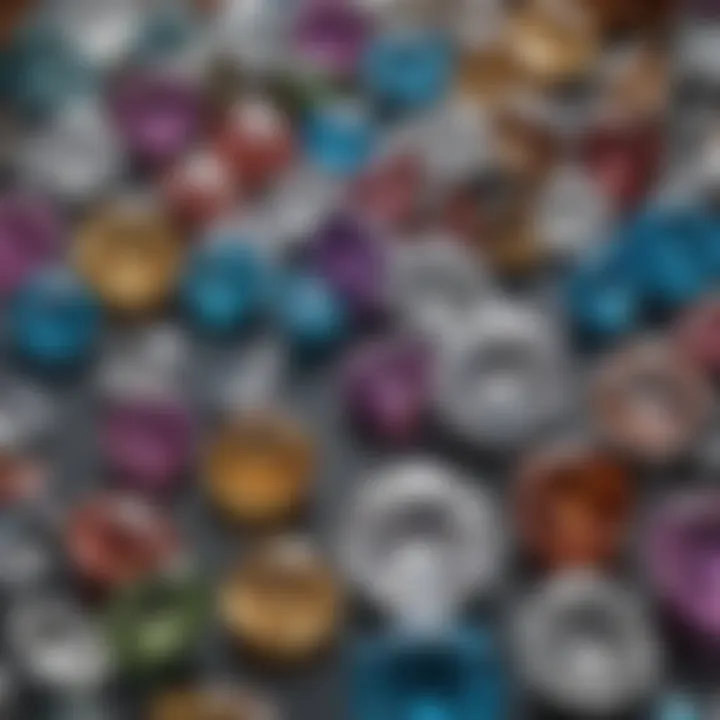
Where to Buy Second-Hand Diamonds
When it comes to purchasing second-hand diamonds, knowing where to shop is as crucial as understanding the stones themselves. The right source can make all the difference in ensuring you receive a quality product while also providing peace of mind regarding authenticity. This section delves into prominent options for purchasing second-hand diamonds while highlighting their respective benefits and considerations.
Reputable Jewelers
Opting for established jewelers when buying second-hand diamonds carries a level of confidence that other outlets might not provide. Reputable jewelers often have a solid track record in the industry, emphasizing quality and customer satisfaction. They typically inspect and certify the diamonds they sell, offering a measure of assurance that can be comforting for first-time buyers.
These jewelers might have a selection of pre-owned pieces alongside their new inventory. This blend can afford the opportunity to see comparisons in craftsmanship, allowing you to appreciate the history behind older settings or unique designs that may differ from contemporary trends.
Buying from a trusted jeweler usually means you’re supported by knowledgeable staff who can provide insights regarding the diamond's history, enhancing your understanding of the purchase.
Online Marketplaces
The internet has revolutionized how we shop, and online marketplaces for second-hand diamonds are burgeoning. Websites like eBay or specialized diamond marketplaces allow you to browse a wide array of diamonds from the comfort of your home. However, while the choices may be vast, it’s pivotal to approach with caution.
Here are a few aspects to bear in mind when buying online:
- Seller Ratings: Check seller ratings and reviews. A positive feedback score can be a good indicator of trustworthiness.
- Return Policies: Make sure to understand the return policies. If a diamond doesn't meet your expectations, it's essential to know if you can return it.
- Certification: Always look for certification from established grading organizations, such as the Gemological Institute of America (GIA).
While online shopping provides convenience, it often requires a keen eye and diligence. Remember, the freedom of the digital space also presents risks.
Auction Houses
Taking a step into the world of auction houses can be both thrilling and daunting when it comes to purchasing second-hand diamonds. Auctions often feature unique pieces that are not available in typical retail settings, allowing savvy buyers to find something truly distinctive. Whether you're looking for a vintage ring from a bygone era or a designer piece, auction houses may be the ticket.
However, participating in auctions necessitates doing your homework. It's wise to familiarize yourself with the auction house's reputation, especially regarding the authenticity of the goods sold. Consider the following:
- Preview: Attend previews to examine diamonds before bidding, allowing you to spot any imperfections or qualities that grab your attention.
- Bidding Terms: Understanding the bidding rules and associated fees can safeguard against unexpected costs.
- Past Auctions: Reviewing past auctions can give you an idea of pricing trends and what to expect regarding competition.
Buying second-hand diamonds from auction houses can yield wonderful finds, but it requires precision and insights into auction dynamics.
"The right source is often just as important as the diamond itself. Choose wisely to ensure your new investment tells a story of its own."
Negotiating Second-Hand Purchases
Negotiating second-hand purchases, particularly when it comes to diamonds, is a dance that combines knowledge, strategy, and trust. This aspect is crucial to ensure that buyers not only get a fair deal but are also satisfied with their purchase in the long run. Unlike regular retail transactions, buying second-hand often involves more than just the price tag; it's about understanding the infinite nuances of the market and the gemstones involved.
Understanding Market Values
To step into this negotiation phase, one must first grasp the broader canvas of market values. The diamond market is a symphony of fluctuating prices influenced by various factors such as rarity, demand, and even global economic conditions. While a new diamond generally has a clear retail price, the second-hand market demands a more scrupulous examination.
- Do Your Homework:
Before you even reach for the phone or step foot into a shop, arm yourself with information. Research similar stones online, perhaps browsing platforms like Reddit or Facebook for insights on what others have paid for comparable diamonds. Utilize sites like Wikipedia and Britannica for understanding factors that affect diamond valuation. - Know Your Stone:
Each diamond has its own unique story, including its cut, carat, clarity, and color. These characteristics heavily influence market values. Not to forget, specific historical or sentimental significance may increase a diamond's perceived value too. - Market Fluctuations:
Keep an eye on market trends and prices. If diamond prices are trending down, it can empower you in negotiations, but if they are climbing, you might have to tap dance a bit more delicately.
In negotiations, a well-researched buyer often has the upper hand, contributing to not just a flexible deal but also heightening the overall satisfaction with the purchase.
Effective Communication Techniques
Once you’ve got your footing in the market value arena, employing effective communication techniques can seal the deal. When discussing price with sellers, a cordial yet assertive approach can make all the difference.
- Build Rapport:
Establishing a positive connection with the seller can go a long way. Sit back, relax, and engage in casual chit-chat before you get to the nitty-gritty. Sellers may be more inclined to negotiate favorably if they feel a personal connection. - Be Honest About Your Intent:
Transparency can earn you trust. Share why you’re interested in a particular diamond. Whether it’s for a special occasion or as part of a collection, understanding your reasoning might motivate the seller to work with you on the price. - Practice Active Listening:
Pay attention to the seller’s responses and cues. If they mention their passion for the diamond or its backstory, this is a golden opportunity for you to leverage that connection in your favor. - Negotiation Timing:
Timing is crucial. If possible, make your offer when the seller seems eager to sell, perhaps during less busy hours or at the end of a sale period. This creates an atmosphere more conducive to negotiation.
Caring for Second-Hand Diamonds
Caring for second-hand diamonds is not just about preserving the beauty of these gems; it's about honoring their past and ensuring they retain their value for years to come. When you invest in a pre-owned diamond, you are not just taking on a financial responsibility, but a stewardship of a piece of art that may have a history of its own. This section delves into what makes proper care essential, providing practical routines and cleaning options to maintain the brilliance of your diamond.
Regular Maintenance Routines
Creating a regular maintenance routine for your second-hand diamond can safeguard against wear and tear. This routine may not be elaborate or time-consuming, yet it plays a crucial role in prolonging the life of your piece. Here are key practices to keep your diamond shining bright:
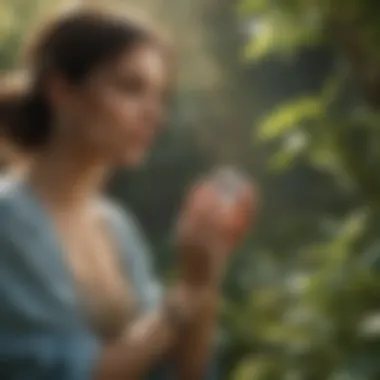

- Inspect Regularly: Take a moment once a month to inspect your diamond for any loose settings or chips. It's best to address these issues before they escalate.
- Routine Cleaning: A gentle cleaning helps to remove dirt and oils that accumulate over time. Using a soft-bristle toothbrush and a mild soap solution can work wonders. Avoid strong cleaners that can be abrasive.
- Safe Storage: When you’re not wearing your diamond, store it in a fabric-lined box or a soft pouch to protect it from scratching or tangling with other jewelry pieces.
- Avoid Chemical Exposure: Be mindful that chemicals in household cleaners or personal care products can cloud a diamond's brilliance. Remove your jewelry before engaging in cleaning or applying lotions and perfumes.
Caring for your diamond does not need to be a hassle. Just a bit of attention can keep it stunning and intact.
Professional Cleaning Options
While regular at-home maintenance is helpful, sometimes it's necessary to call in the experts. Professional cleaning options can provide a level of care that goes beyond everyday upkeep. When considering a professional cleaning, look for certifications or reviews that ensure skilled service.
- Jewelry Stores: Many reputable jewelry stores offer professional cleaning services. They not only clean the diamond but will also check the mounting and make any necessary repairs.
- Ultrasonic Cleaners: Used by professionals, these sophisticated devices can remove dirt and grime effectively. However, they are not suitable for all diamonds, especially those with coatings or more delicate features, so ensure your jeweler discusses this option with you.
- Steam Cleaning: This method utilizes high-pressure steam to clear debris from your diamond's facets. It's efficient and can be done safely for most gems.
"A second-hand diamond, with proper care, can shine brighter than new, telling stories of its past while glimmering in your future."
By integrating regular maintenance practices with professional interventions, you not only enhance the diamond’s aesthetic appeal but also protect your investment. It's like nurturing a plant; the more you care for it, the more it flourishes and brings you joy.
Personalizing Second-Hand Diamonds
When it comes to second-hand diamonds, there's a distinct allure in personalizing them to reflect your unique narrative and style. Whether it’s a family heirloom or a vintage piece, giving new life to these pre-owned gemstones can transform them into something truly one-of-a-kind. This section unveils the significance of tailoring these cherished items to hold deeper meaning and resonate with personal identity.
Notably, personalizing second-hand diamonds can enhance their emotional value. Each piece carries its own history, but with customization, it not only retains that initial charm but also becomes a part of your story. Additionally, it can often come at a lower cost compared to opting for a brand-new designer setting.
Custom Settings and Designs
Choosing custom settings and designs for your second-hand diamond can range from a simple halo to a more intricate vintage style. When visiting reputable jewelers, they often offer an extensive catalog of designs that can harmoniously merge with your pre-owned diamond.
Being mindful about what appeals to you is key. Think about the occasion for which you might wear the diamond. What complements your wardrobe? For example, if you favor classic elegance, you might visualize your diamond nestled in a solitaire setting. Alternatively, if you lean towards contemporary fashion, a modern twist like a tension setting could be more to your liking.
- Fit for Your Style: Your diamond should resonate with your personality.
- Unique Elements: A custom design can include specific materials or gem varieties beyond diamonds.
- Budget-Friendly Alternatives: Custom pieces often allow for more control over your budget.
Engraving Possibilities
Engraving offers an additional layer of personalization for your second-hand diamond, making it all the more special. The beauty of this process lies in its versatility—from meaningful dates to initials, the possibilities are wide-ranging. For many, this option adds sentimental value to an already significant piece.
Consider how the engraving will align with the diamond's settings. For instance, if the diamond is placed in a broad band, integrating a quote or short phrase can elevate its charm. However, if it’s a delicate piece, a more subtle engraving, like initials on the inner band, may serve better.
- Choose Meaningful Words: Think of short phrases that resonate with you or significant milestones.
- Location of Engraving: Consider where the engraving will be most visible.
- Consult with Experts: Jewelers can offer guidance on your options and ensure that your desired style matches the diamond’s characteristics.
Personalization transforms a second-hand diamond from an object of beauty into a cherished emblem of your personal journey.
As you embark on this process of customization, remember that the aim is to celebrate the diamond’s past while integrating your unique vision. With careful thought and creativity, you can breathe new life into second-hand diamonds, making them a true reflection of who you are.
The Future of Second-Hand Diamonds
As the world continues to evolve, the diamond market is undergoing significant changes, particularly in the realm of second-hand purchases. Understanding the future of second-hand diamonds is critical for both collectors and casual buyers alike, as it informs decisions that balance quality, ethics, and value. In recent years, a marked shift toward sustainability has influenced consumer choices, leading people to reconsider the implications of their purchases. This section delves into the emerging trends and technological advancements shaping the second-hand diamond market.
Trends in Sustainability
Sustainability is no longer merely a buzzword; it has become a guiding principle for many consumers when it comes to luxury goods, including diamonds. The increasing awareness of the environmental impact of mining practices has led to a growing interest in second-hand pieces. Purchasing a pre-owned diamond often means foregoing the environmental costs associated with new diamond production.
The benefits of buying second-hand include:
- Reduced Environmental Footprint: Buying a second-hand diamond helps lower the demand for newly mined stones, which can significantly cut down on habitat destruction and carbon emissions.
- Support for Ethical Practices: Many second-hand diamonds come with established provenance, allowing buyers to feel secure that their purchase does not support exploitative labor practices.
- Value Retention: Second-hand diamonds often retain their value better than new ones, particularly as the market shifts toward sustainability. Buyers may find that they can sell or trade their pieces later while still being conscientious about the source of their gems.
By consciously choosing second-hand options, buyers not only gain unique pieces but also actively participate in a market shift toward more sustainable practices.
Technological Advancements in Buying
Technology is playing an increasingly pivotal role in how we acquire second-hand diamonds. With the rise of online platforms, consumers can easily explore a vast array of options from the comfort of their homes. This convenience creates opportunities to compare quality and prices more effectively than ever before.
Key advancements include:
- Blockchain for Provenance Tracking: Some platforms are integrating blockchain technology to provide transparent histories of diamonds. This innovation helps buyers verify the origins of their stones, reinforcing trust in second-hand purchases.
- Virtual Try-Ons and Augmented Reality: New technologies are allowing consumers to see how a diamond looks in various settings without needing to visit a store physically. This interactive experience can guide buyers in making informed decisions about styles and settings.
- Artificial Intelligence in Pricing: AI algorithms can analyze market trends and past sales data to provide accurate valuations, aiding buyers in negotiating better prices and ensuring they don’t overpay for a stone.
Leveraging these technologies helps consumers navigate the complexities of purchasing second-hand diamonds while providing tools that enhance their overall buying experience.
"The future of second-hand diamonds lies in sustainability and technology, empowering buyers to make informed and ethical choices."
In summary, understanding and embracing these future trends offers a richer, more responsible approach to buying diamonds. By prioritizing sustainability and adopting new technologies, consumers can not only enjoy stunning pieces but also contribute to a healthier planet.







